There is something special about the first heap of orange leaves in Fall, the first snow of the year, and the first sizzle of your summer barbecue! Every changing season brings renewed joy and hopes to people’s lives. Sadly, season changes also mean allergies, flu, and other health issues. Children and adults are equally affected while adjusting to the climatic changes of a new season. We often include various dietary changes, new habits, and exercise routines to adapt to every new season. Yoga is a great way to combat the health issues one may face during a changing season.
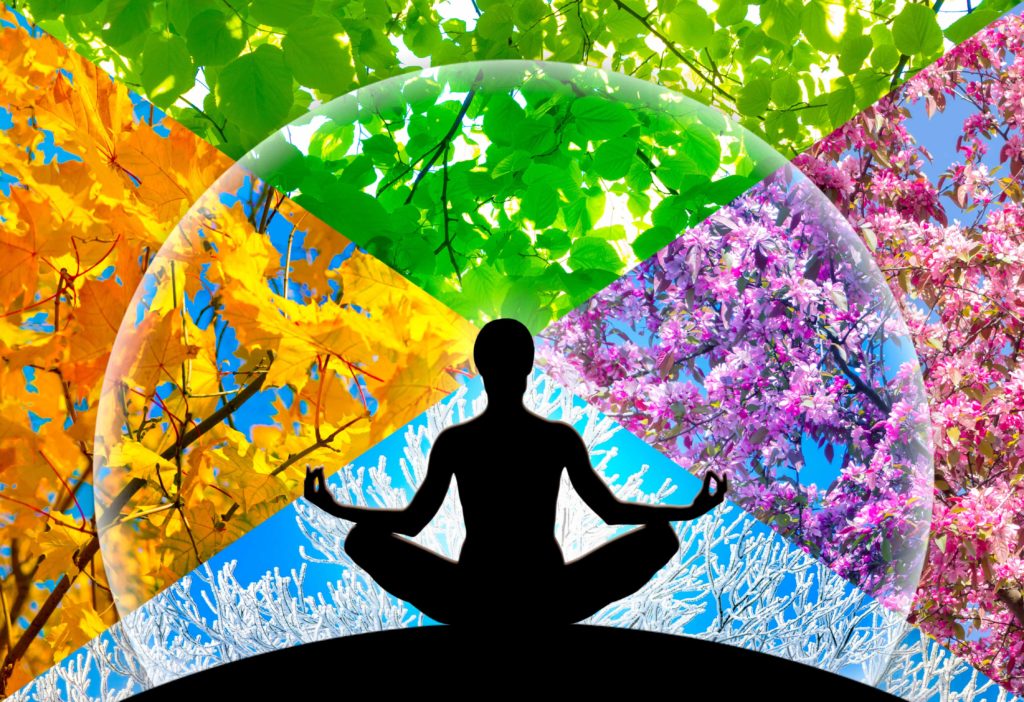
Yoga is an ideal, holistic physical exercise and an excellent way to lead a healthy lifestyle. Let us learn more about the role of Yoga in preparing our health for climatic changes that accompany a new season.
Why Does Season Change Affect Us?
A new season alters several parameters of our daily environment that directly impact our well-being. The most crucial parameter is a change in the surrounding temperature. The human body adjusts its physiological functions to coordinate with the external environment. A sudden dip or rise in your surrounding temperature can disturb your digestion, respiratory functions, sleep cycle, hormonal cycle, and even metabolism.
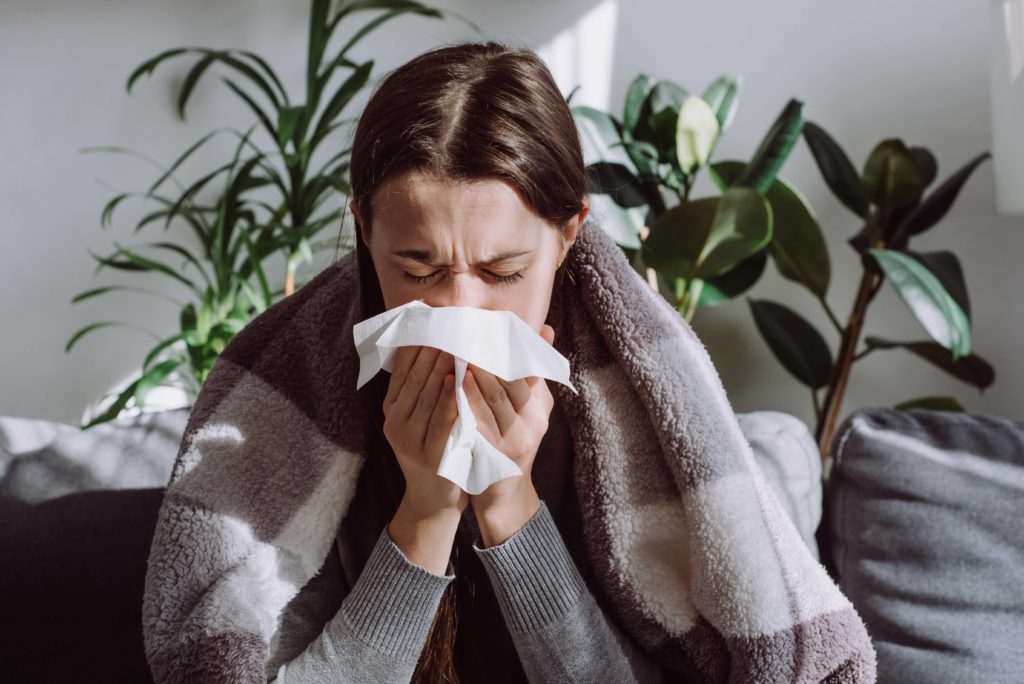
Other environmental parameters like a rise in the pollen count, shorter or longer days, and humidity also alter your physiology. Our food habits also change to adjust to external weather changes, which can upset our digestion at the beginning of a different season. As our minds and bodies adapt to the new weather changes, we may experience temporary digestive, respiratory, or skin ailments. Identifying and altering our habits that may cause health discomfort during a changing season is crucial.
Role Of Yoga In Preventing And Treating Seasonal Health Disturbances
Yoga is a holistic way to shape mental health, develop a robust physique, and enhance spiritual well-being. Yoga has excellent scope in treating various disorders and nurturing us back to good health. Here is how Yoga helps to curb health disorders associated with a changing season.
- Various Yoga postures help to improve your digestive functions and promote healthier metabolism.
(READ our blog to know which Yoga postures will nurture your digestive health and prevent a bloated tummy at the onset of a new season.)
- Shorter days and a poorly lit sky are common occurrences during deep winters in various countries. Lack of an active social life and good physical activity on cold and bleak days can stimulate depressive thoughts and stress. Meditation and Yoga asanas are great ways to break the monotony of winter and feel cheerful.

- Chronic health disorders like hormonal imbalance, metabolic disorders, or skin diseases are prone to temporary aggravation during season change. Practicing Yoga asanas, Pranayama, and Yoga Mudras is a great way to prevent chronic health conditions from relapsing.
- Respiratory allergies are common in children and adults, especially during the initial weeks of the Spring season. Regular breathing exercises strengthen your lungs and prevent the onset of respiratory illnesses.

- It may be hard to believe, but Yoga is one of the best ways to prevent recurring skin allergies and eczema during seasonal climatic changes. Yoga asanas and Pranayama detoxifies your body and promotes healthier blood circulation to your skin. Practicing Yoga will undoubtedly reduce your chances of developing dermatological disorders.
Yoga works in several other ways to prevent health disorders that commonly occur at the onset of every new season. Let us know more about the Yoga techniques you can quickly implement to maintain a robust physiology.
3 Yoga Postures To Practice During Every Season Change
1. Utkatasana
The Chair pose, or Utkatasana, is an excellent posture to stretch almost all your muscles and is effective as a full-body exercise. Utkatasana is a standing Yoga posture that requires you to squat slightly and can be done as a warm-up exercise before you begin your Yoga session.
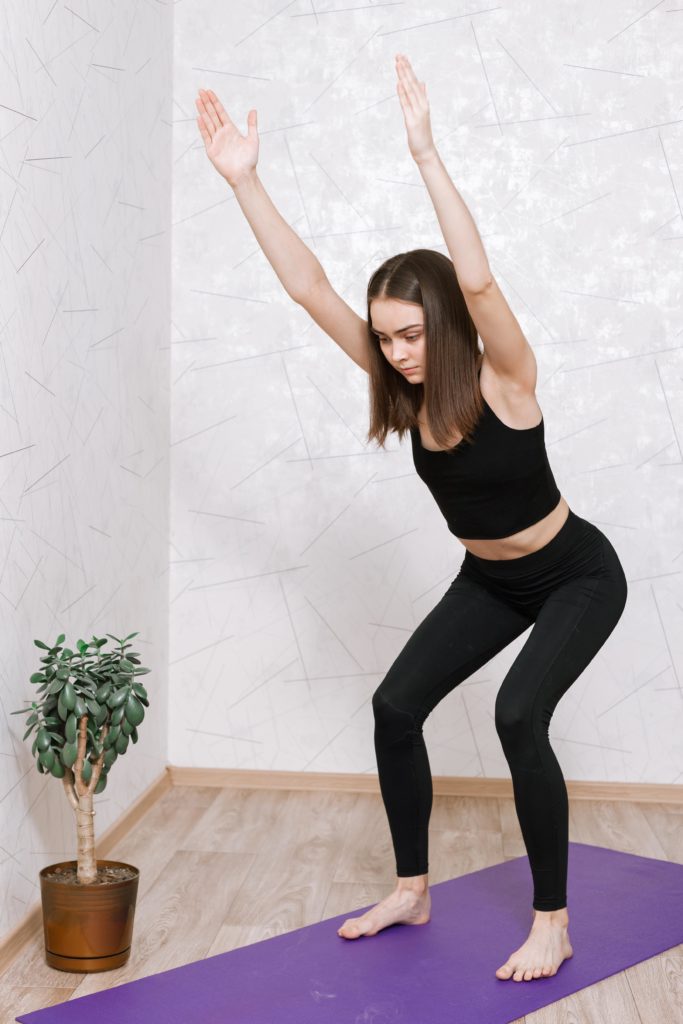
Steps Of Utkatasana
- Stand straight with your arms resting at the side and your feet aligned with the corresponding hip.
- Take a deep breath, and as you exhale, bend both knees and lower your hips as if sitting in a chair.
- Inhale and elevate your arms while keeping them parallel. Stretch your arms, with your fingers pointing towards the ceiling, until you feel an excellent shoulder stretch.
- Adjust your spinal posture without bending excessively in any direction. Remain in Utkatasana for 5-10 breathing cycles before relaxing your body.
Utkatasana is a great way to stretch your limbs and unwind after a particularly exhausting day. The posture has beneficial effects on your respiratory organs as it helps to open up your chest muscles. Combining the practice of Mula Bandha with Utkatasana ensures active digestion and improved metabolism. (CLICK here to know what Mula Bandha is)
2. Vajrayana
Vakrasana is a seated Yoga posture that requires you to twist your body, thus stretching your abdominal muscles adequately. Vakrasana is rightfully named so since Vakra means ‘twisted’ in several Indian languages.
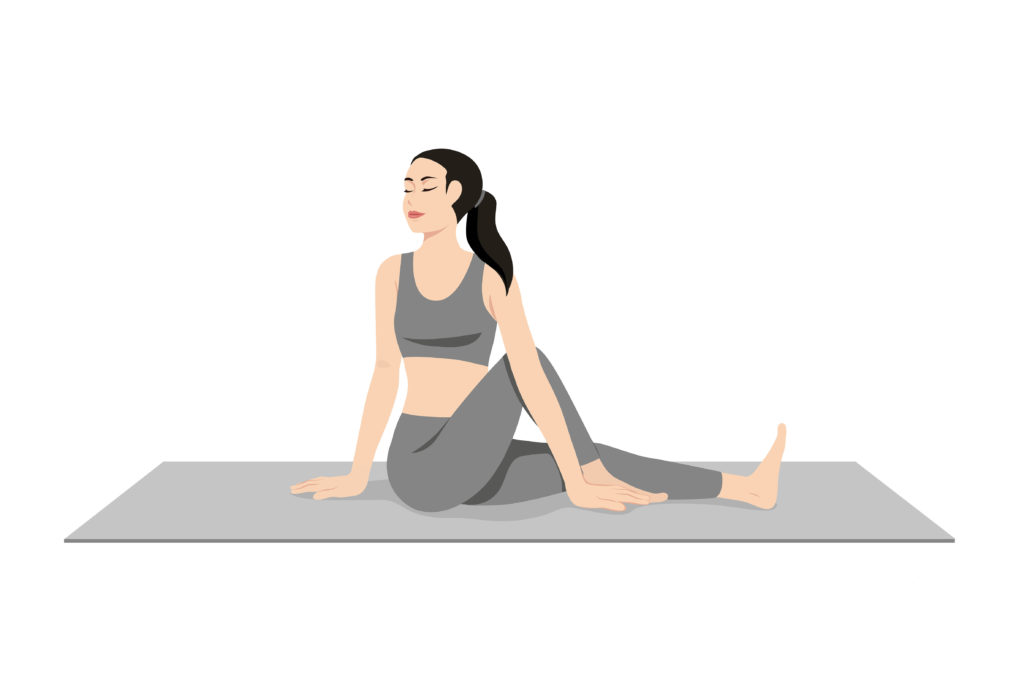
Steps Of Vakrasana
- Sit on your Yoga mat or the bare floor and extend your legs in the front while keeping them parallel.
- Bend your left knee and touch your left sole to the floor without changing the position of your right leg.
- Twist your torso, chest, and shoulders to the left, and clasp your left ankle with your right hand.
- Press your left palm to the floor and straighten your elbow for better support.
- Focus your gaze towards the back over your left shoulder.
- Stay in the Vakrasana pose for 5-10 breathing cycles before relaxing your twisted body, and repeat the posture on the right side.
Vakrasana works wonderfully to treat the symptoms of sluggish digestion and detoxifies your body effectively. Due to its detoxifying action on your body, Vakrasana also keeps skin disorders away. The asana also reduces muscular lethargy, tones your arm and leg muscles, and effectively heals sore muscles.
3. Vrikshasana
Vrikshasana is a standing Yoga pose that stretches your limbs, opens your chest muscles, and improves your cardiac activity. The asana is called the tree pose because you stretch your arms and align your legs to assume a tree-like posture during Vrikshasana.
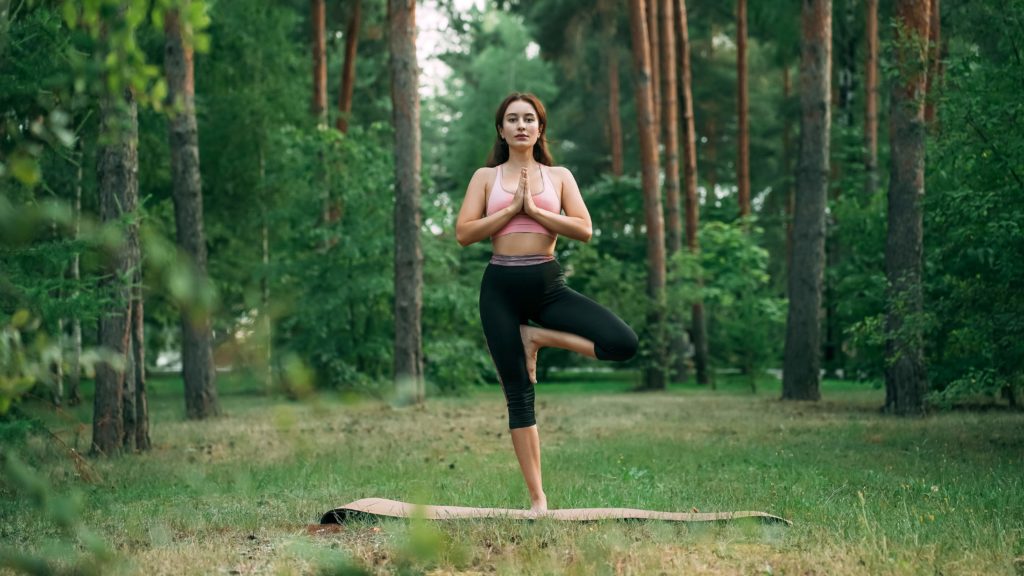
Steps For Vrikshasana
- Stand straight with your legs spread at a distance of one foot and your hands relaxing at the side.
- Bend your right knee and gradually shift your body weight to your left leg. Tighten your core for better support.
- Touch your right foot to your inner left thigh just above the knee.
- Fold your hands and join your palms before your chest as if praying. Alternatively, elevate your arms, stretch them upwards, or interlock your fingers and turn your palms towards the ceiling.
- Try to stand still for 5-10 breathing cycles while practicing Vrikshasana.
Vrikshasana is a great way to strengthen your respiratory system and avoid allergic coughs and colds. Vrikshasana prevents the onset of anxiety attacks and may help you if you are prone to depressive emotions.
Besides physical Yoga postures, you can also practice Pranayama, mudras, and meditation techniques to sail through the rough conditions of a changing season. Yoga is not just a one-hour fitness session that lets you build good health.
Please VISIT our blog page to read informative and interesting blogs on Pranayama and meditation.
Yoga is a life-altering discipline showing you the path toward a healthier lifestyle. Do not let the changing season get to you this time. Practice Yoga and always be happy and healthy!







